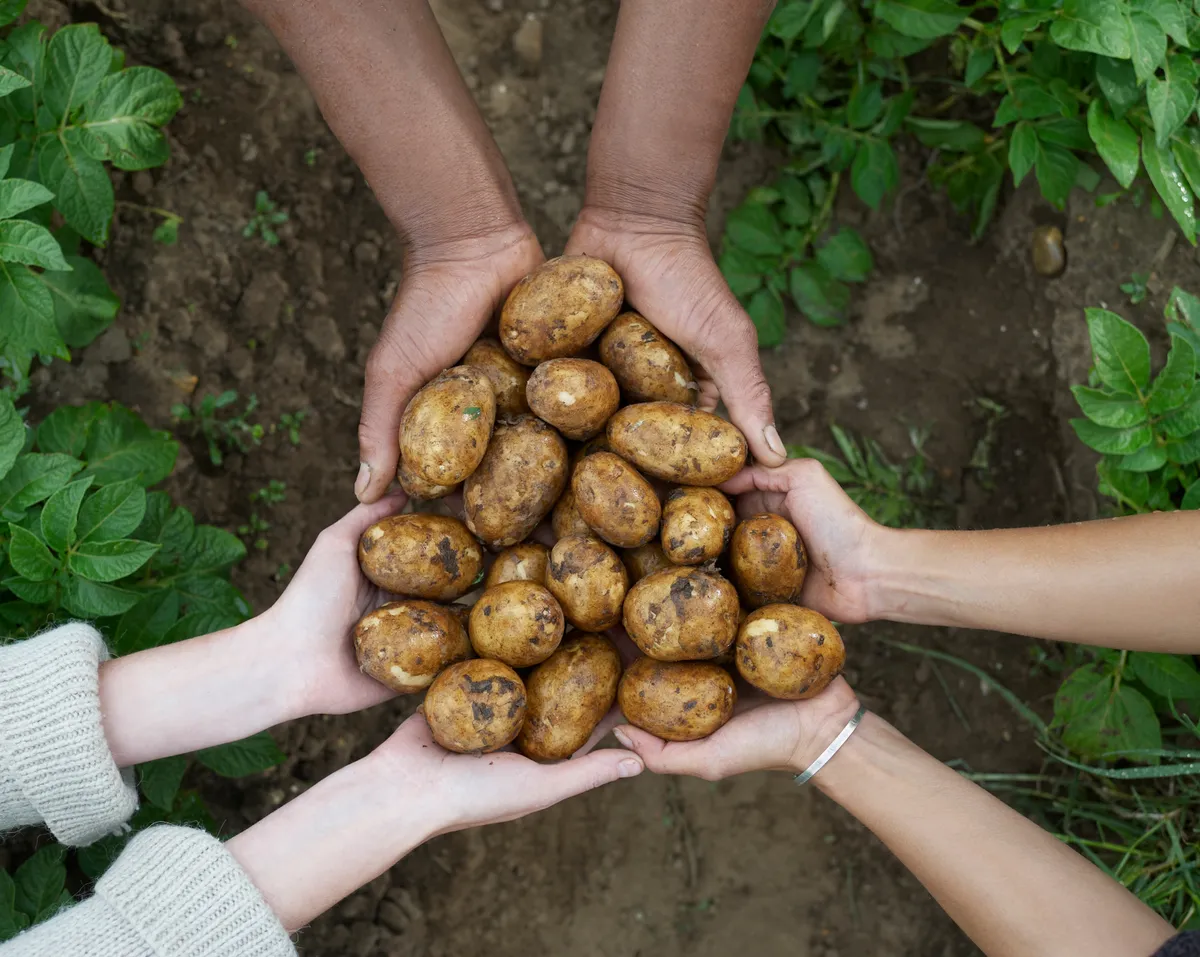Autumn is the season of mists and mellow fruitfulness and marks the end of the growing season. The harvest season is an important date in the British farming calendar as annual crops are harvested for food and animal feed.
The success of the annual harvest is dependent on a number of environmental factors and the weather plays a crucial role – too much or little rain can spell problems and in recent years heatwaves and drought have caused serious issues for farmers. One key way we as consumers can support British farmers is by buying locally produced food and drink.
Here is our British harvest guide, looking at the history and traditions of this bountiful season.
When is harvest in the UK?
In the UK the harvest festival, also known as the harvest home, is traditionally celebrated on the Sunday nearest the harvest moon. This is the full Moon that occurs closest to the autumn equinox, which is often between 21-23 September.

Normally falling towards the end of September, or early October, the harvest festival is the closest thing we have to a day of thanksgiving. Although today we can plan a fixed day for this celebration, in the past the harvest festival differed, based on when all the crops had been brought in. The whole community, including children, needed to help right up until the end, as lives depended on the success of the harvest.
In the past they would be held as soon as the harvest had been completed and the final cartload triumphantly returned to the farm where the Harvest Supper, also known as the ‘Harvest Home’, would take place.
- British apple guide: traditional apple varieties and recipe ideas, plus how to grow your own tree
- Best places in Britain to see the autumn colours
- Britain’s best autumn wildlife spectacles
What are the most commonly grown crops in the UK?
Barley, rapeseed, wheat and oat. All of these crops are used in food and animal feed production in the UK and overseas.
How long does the harvest season last?
Traditionally, farmers begin harvesting their crops towards the end of August and in early September.
Historically, harvest was celebrated with lavish meal of several meats, vegetables, puddings, tarts and ale, and would be accompanied by singing, drinking games and much reverie. All of which was to be conducted by St Michael’s Mass on the 29th September, the signifier for the end of harvest.
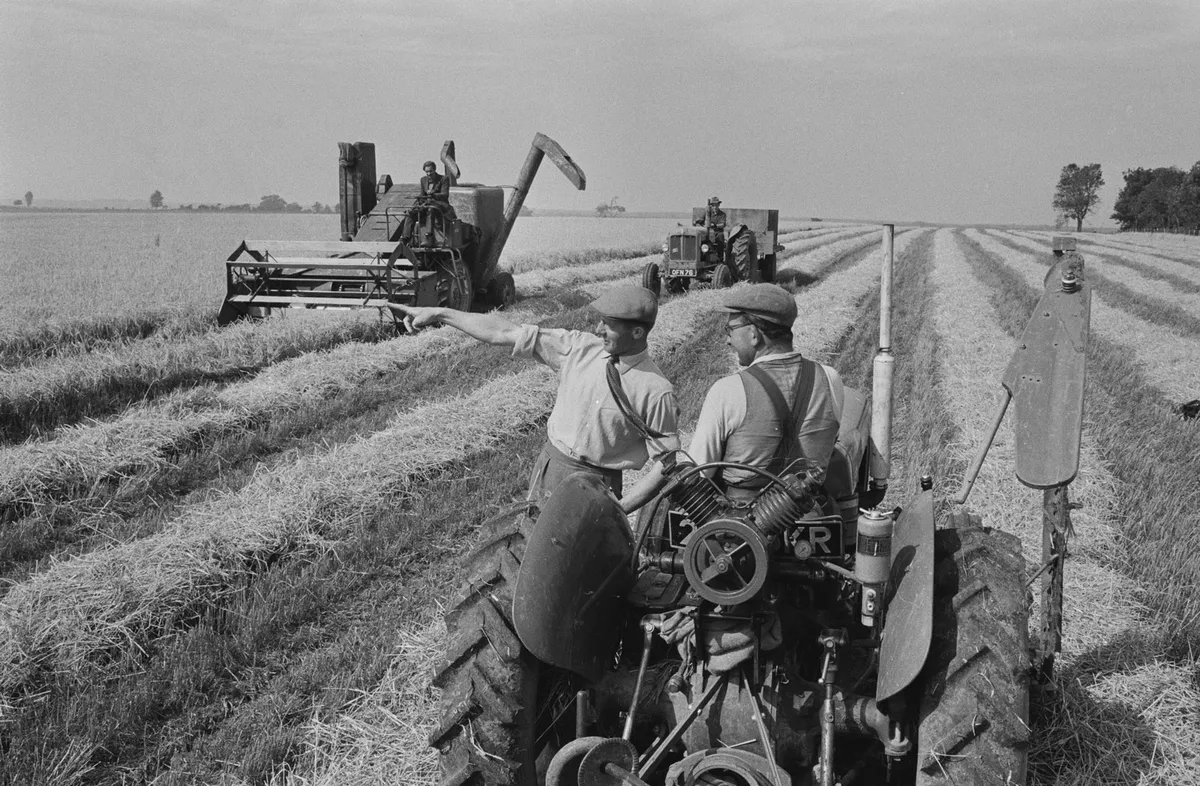
What is the history of the harvest?
By looking back through the history and customs associated with harvest we can see why it is such a crucial date in the country calendar, says Duncan Haskell.
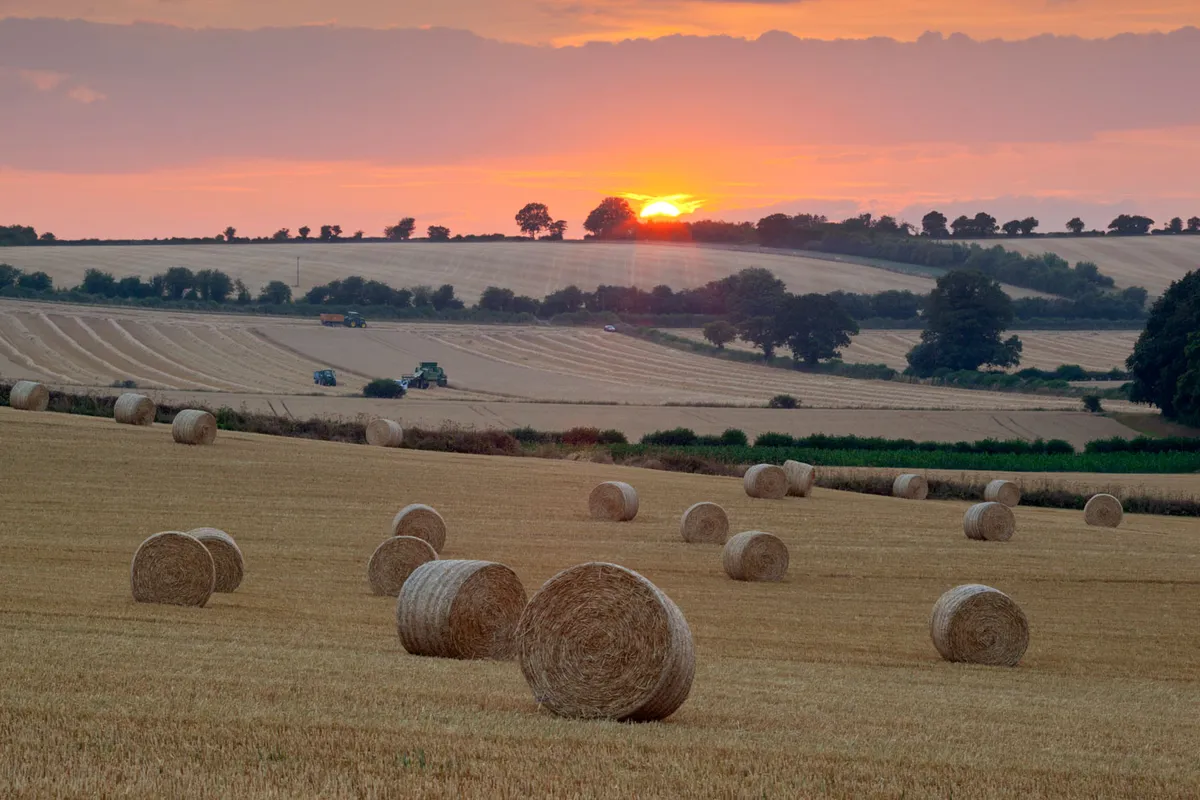
What is the origin of the word harvest?
The word ‘harvest’ comes from the Old English word hærfest meaning ‘autumn’, aptly the season for gathering the food of the land. This was a vital time of year, when success was a genuine matter of life or death. A prosperous harvest ensured that a community would be fed throughout the potentially barren winter months. It’s therefore no surprise that it was also a time steeped in superstition and, if successful, much celebration. Many of these traditions even pre-date Christianity.
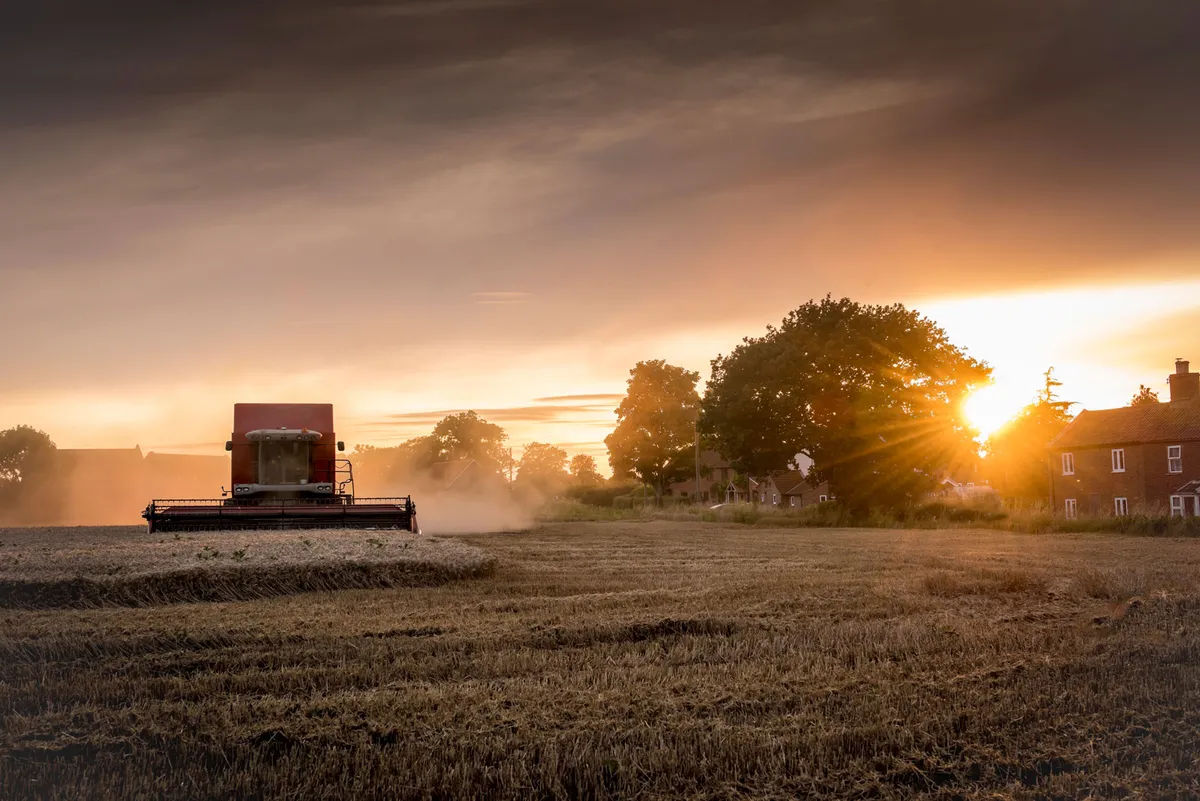
With technological advances lessening our dependence on the seasons and the number of people working on the land greatly reduced over the last two centuries, surviving practises are now mainly symbolic in nature. Even during the pre-mechanised past it would be incorrect to suggest that there was a uniform approach to harvest or a common set of beliefs and customs, there were vast regional differences throughout the country. What did unite everyone though was the importance of crop gathering and the reverence in which harvest was held. What follows are some of the better known examples from the past...
Roaming groups of labourers would seek employment from farms at the start of the season, in Norfolk they would drag their sickles along the floor to announce their arrival. A ‘Lord of the Harvest’ would be appointed and was in charge of negotiating rates and conditions of labour. Leading his workers (‘reapers’) as they scythed the fields, he would be served first at mealtimes.
The church festival that is the most common harvest celebration still held today originated in Morwenstow, Cornwall in 1843, when Reverend Robert Hawker invited the parishioners of his church into his home to receive the Sacrament in “the bread of the new corn.” Whether from the Divine, the elements or the mystical, all help was gratefully received.
Now that most of us neither sow nor reap what we eat, it is almost impossible to imagine how crucial this time of year was in the calendar, but by knowing a little of the history and keeping these traditions alive we are honouring those who depended upon it.
The golden age of the harvest
Jonathan Brown revisits harvests of more than 150 years ago, when all the work was done by hand and everyone was roped in to help out.
In 1863, the farmer of Little Somborne Farm in Hampshire wrote in his diary: “Began harvest on the 2nd August and up to the 25th the weather was delightful, which enabled us to get a splendid wheat crop saved in the best of order and a great portion of barley and oats.” The weather broke at the end of August, but it did not spoil the harvest, which, according to many accounts from around the country, was the best crop of wheat for about 30 years.
Fine weather and healthy crops meant good conditions for the harvest, and most of it was got in quickly – unlike the disastrously wet year of 1879, when some crops were still uncut in November. Bounty had its downside, and the prices fell – the price of wheat was 20 percent less in 1863 than it had been the previous year – but in general, this could be counted a golden year. A golden year in a golden age: one of the first historians of British agriculture coined the phrase ‘golden age’ to describe the 1850s and 1860s, when everything looked rosy for the arable farmer. Prices were good, imports were low. The name has stuck, despite all the revisions of interpretation made by later historians.
All hands to the fields
The corn harvest began in early August – a few weeks later than is usual now. It followed hard on gathering in the hay in early summer, making for a very busy few weeks for everyone on the farm – and beyond the farm, too, for the workload was greater than the regular labour force could manage. Every available man and woman, and many a child, was needed to get the crop in.
Farmers in the arable districts were anxious about the labour force as harvest approached, and complaining of shortages. About a million regular farmworkers were employed in England and Wales in the mid-19th century, but numbers swelled during harvest, especially in the eastern arable counties. To augment their regular workers, farmers turned to anybody willing to present an able body. The village wives were recruited, and there were all sorts of casual and migrant workers – tramps, gypsies and especially the Irishmen. People used to come out from the towns to help as well, but by the 1860s, the demands of industry were reducing that supply of workers. The hop harvest in Kent was the last survival of that practice, petering out in the 20th century.
Cereal crops – wheat, barley, oats – were cut by hand in the 1860s, which was why there was such a great demand for workers. There were machines to do the job: as long ago as 1828, Patrick Bell had built one for his farm in Scotland, but it did not catch on. An American firm showed a redesigned model at the Great Exhibition in 1851, which attracted more attention, but by 1863, few farmers had bought a reaping machine. Each one cost about £25, and most farmers were unsure that was justified for a machine used just four weeks a year. It still seemed cost-effective to employ gangs of men using hand tools, despite the anxiety of finding the workers.
That’s not to say the work in the harvest field had been unchanging. It had metamorphosed, as more efficient scythes and bagging hooks replaced reaphooks and sickles as tools for cutting the corn. There were regional preferences about the use of the tools: Somborne was in a scythe-using zone. Scythes and bagging hooks were bigger and cut with a swishing, mowing action, rather than the sawing of the small-bladed sickle, so the crop was cut more quickly. Each harvester could manage a third of an acre with a reaphook or sickle; with a bagging hook or scythe that became an acre or more.
Increased production
Paradoxically, this did not necessarily solve the farmer’s labour problem. He was growing more cereals in the 1860s than 30-40 years earlier, so needed the extra output of the scythe and bagging hook. The higher cutting rate also increased pressure on workers following behind the cutters, for there was fine division of labour. Cutting the crop was done by a group of five or six men with the heavier scythe or bagging hook, although women often wielded the sickle too. The cutters left a trail of corn and groups of workers raked it up to be tied into sheaves, binding it with straw knots. Boys and lads brought out the food for the breaks – ‘elevenses’ and ‘fourses’ in Suffolk.
Sheaves were gathered into stooks, between six and 10 sheaves leaning against each other to allow drying air to flow though. Local custom accounted for the differences in number, so that styles of stook varied across the country. In Kent the ‘hooded stook’ was preferred, in which an additional sheaf was laid on the top as a cap to keep rain off. The ‘Irish mow’ in south-west England was a pile of 20 sheaves. Whatever the style, the rows of stooks gave a characteristic pattern to the harvested fields where they remained to dry for about three weeks.
It was back-breaking work, with all the leaning and stooping into the cutting, and bending to gather up the sheaves. In hot weather it was dry, sweaty and dusty; in wet or changeable weather, trying to cut laid crops was difficult and more taxing. The language among the workers was, wrote Richard Jefferies, a contemporary writer, “not that of pastoral poetry”.
The day was long – 5am till dusk, but the compensation was the extra pay. Harvest was a special deal for regular and seasonal workers alike. A regular farm labourer earning 10-12 shillings a week (typical of large parts of central and southern England) could get up to £1 a week at harvest time, and there might also be a bonus payment at the end. In addition, his midday meal was usually provided, plus all the beer or cider needed to keep him going through a hot day. Casual and migrant workers were paid at similar rates in deals struck with the farmer. Some were at piece rates – cutting and tying wheat at 12 shillings an acre, for example.
It cost the farmer a lot. The £25 he had not spent on the reaping machine could easily be paid in additional harvest wages, but it was important for his business survival. For the labourer’s family, the harvest extra meant survival. Husband, wife and children could all be earning for these weeks, bringing in enough to pay for things beside food. Richard Jefferies noted that harvest wages allowed labourers “to pay rent, back debts, find shoe leather and so forth”.
After the stooks were dried, the crop was carted to the stackyard. Most of the migrant harvesters had gone by now, but the work of loading the wagons and building the stacks continued to draw on local labour beyond the regular men. It was all manual work still; the first machines to lift hay and straw into a stack were introduced in 1863. It was hard work for the horses as well, hauling the heavily laden wagons.
The harvest celebration
After the harvest came the celebration – harvest home (called ‘horkey’ in some places). Harvest was one of the great village festivals – the celebration of the successful gathering in of the corn – and shared by all the village.
There were some ancient traditions behind the celebration, the form of which varied across the country. Often there was a grand procession for the last wagon-load of corn brought from the field; the Illustrated London News, a leading weekly magazine, had a picture of one at Swallowfield near Reading in 1860. The band played, a banner was held aloft and the wagon was decorated with the plaited straw corn dollies.
A harvest tea or supper, shared by squire, farmer and labourer alike, was followed by dancing and merry-making. It was this final part of the day that caused consternation among the respectable classes – “unrestrained riot and excess” was how the celebration of 1867 was described in the Essex parish of Foxearth. As a result, the festival was “taken in hand by the clergyman”, and centred on a thanksgiving in the parish church.
During the 1870s, farmers changed their minds about the reaping machine. It was now reckoned to be able to cut the crop at half the cost of using manual labour, and only a driver, and perhaps a lad, was all that was needed to operate it.
There were still jobs in raking and stooking, carting and stacking, but the farmer was less dependent on casual and migrant labour. The harvest field became less crowded and bustling as the machines took over. The next generation of reaper-binder machines required yet fewer workers, and the process continued until we see today’s harvest: an emptier landscape with one man driving the combine supported by two or three others with tractors and corn trailers.
British harvest traditions
Corn dolls
Harvest celebrations pre-date Christianity, but it has always been seen as a very spiritual time to give thanks for the year’s crop. Symbolic corn dolls, made out of the last sheath of the harvest, were placed on banquet tables when parishes had their huge feasts. The doll was then kept until the spring to ensure the continuation of a good crop next year. This custom began with Saxon farmers, who believed the last sheath contained the spirit of the corn.
Of special importance were the last sheaves of corn left standing as it was often believed a Corn Spirit resided within them. A descendent of the Roman goddess of grain Ceres, it came to be known by a variety of names such as ‘The Maiden’, ‘The Neck’ and ‘The Mare’ and once scythed would be made into a symbolic corn doll. First though came the act of actually cutting these final sheaves.
Reapers were anxious not to anger the spirit so they would line up at a distance and throw their sickles until the corn was cut, a time-consuming act which guaranteed anonymity. In the Welsh Borders these straws would be tied into four bunches, to represent the legs of a horse, before the sickle-throwing commenced. In Devon and Cornwall there was much ceremony attached to ‘Crying The Neck’ with the final reaping held aloft by a farmer who was encircled by his workers. The corn dolls would often be kept above the hearth and, in order to guarantee the success of the next harvest, ploughed back into the land the following Plough Monday. In other regions they were thrown into a neighbouring farm that was yet to finish their own work, a boastful and enraging act.
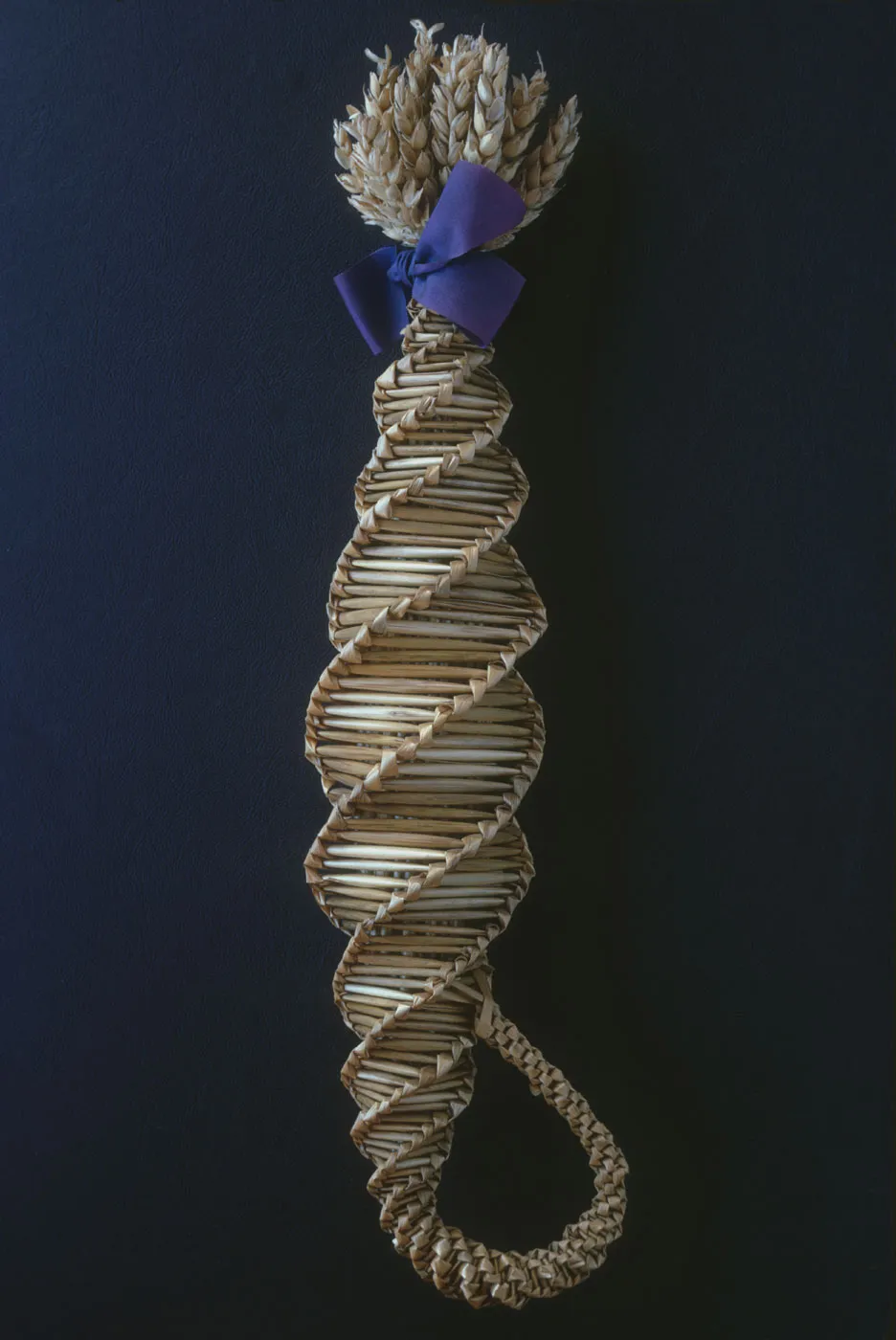
They would sacrifice this corn along with a hare – normally one hiding in the crop - although later there was no sacrifice and model hares were made out of straw instead. This then led to the making of corn dolls, which were hung up in farmhouses, and which were supposed to represent the goddess of the grain.
Offering thanks for the fishing seasons
The word harvest normally makes us think of agriculture, but many harvest celebrations exist around the country that celebrate another type of reaping. There are about 24 festivals that give thanks for the fishing seasons. In October, in Billingsgate, London, there’s the Harvest of the Sea Thanksgiving, where fish and netting decorate the church. These festivals arose in many fishing towns and villages, where the locals depend largely on fishing for a living. A tradition in North Shields, during the Blessing of the Salmon Fishery, is to give the first salmon catch to the vicar.
There are about 24 festivals that give thanks for the fishing seasons.
Harvest celebrations
From the first harvest celebration, to the last – St Michael’s Mass, on the 29th September, celebrates the end of the productive season. Also known as Michaelmas, it signifies a time when all the harvest should have been brought in. Its beginnings can be traced to the 5th century when the cult of St Michael spread to Western Christianity. During the Middle Ages it was celebrated as a huge religious feast, and the harvest traditions grew from there. Fairs with market stalls and games, and churches decorated autumnal and gold, sprung up around this festive time. People also ate geese on this day, said to bring financial protection for the next year.
